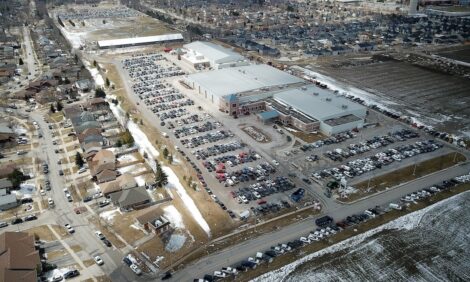



Will Corn and Soybean Crops Get Finished?
US - Corn and soyabean moisture may be limited by delayed planting and mild summer conditions, a crop scientist has predicted.While crop conditions remain good for both crops, crop development, including pod formation and filling in soybean, and grain fill in corn remains well behind normal, said University of Illinois crop sciences professor Emerson Nafziger.
“Corn is 10 days to two weeks behind normal, and soybeans are two to three weeks behind normal. The number of days behind will ‘stretch’ as the weather cools, so late crops get even later,” he said.
“Ten days behind in mid-August will become 15 or 20 days behind in mid-September even if temperatures are normal.”
Late-planted corn often requires fewer growing degree days (GDDs) to reach maturity than early-planted corn. Nafziger said that this lowered GDD requirement is often reflected in lower yield as the crop experiences stress during high temperatures and dry weather in mid-summer. This year, however, with temperatures generally below normal in recent weeks, accelerated development is not expected, he said.
“Instead, we are seeing that corn development is following closely the normal number of GDDs required to reach each stage. This means less chance of premature death and a better chance to fill grain completely. But for late-planted corn it also means late maturity,” he added.
How late then can the corn crop be expected to mature?
Nafziger said if normal GDD accumulations in August and September occur, corn planted in the Champaign area on May 1, May 15, and May 31 will accumulate about 3,020, 2,850, and 2,530 GDD, respectively, by the end of September.
If a mid-season (111-day relative maturity) hybrid needs 2,700 GDD from planting to maturity regardless of planting date, corn planted on these dates should reach maturity (black layer, about 32 per cent grain moisture) on about September 5 to 10, September 15 to 20, and mid-October, respectively.
“The crop seems to be on course to do this. Corn planted in early May is at stage R3 (milk stage) now, while corn planted in late May or early June is just finishing pollination. This reflects ongoing cool temperatures so far in August, and if these continue, maturity dates will be even later,” he said.
With a 50 per cent frost date estimated for October 20, a mid-season corn hybrid planted in early June should mature before frost, if frost does not occur before its normal 50 per cent date.
“But drydown slows quickly as we move into October, and even early-planted corn will dry slowly after maturity unless September is unusually warm,” Nafziger said.
“Corn planted in mid-June is unlikely to mature before frost if temperatures are normal and frost comes at its normal time.”
While the soybean crop has a dark green, healthy appearance in most fields now, Nafziger said podsetting is later than normal, and the crop planted in the second half of May has not yet reached or moved past beginning podfill (stage R5).
“If temperatures continue to be cooler than normal, we can expect the crop to reach maturity only by late September or early October. We hope to not see a repeat of 2009 when more than half of the Illinois soybean crop was harvested after November 1, following a very wet October,” he said.
Beyond their effect on maturity, cool temperatures this time of year are not favorable for soybean. The crop has good photosynthetic ability due to its healthy, complete canopy, and soil-water use rates are less than normal, which extends the water supply, Nafziger explained.
“But below-normal daytime temperatures (and clouds) mean less photosynthesis, and cool nights can physiologically limit growth rates and photosynthetic rates the next day. The first effect we might see is below-normal pod numbers or pods initiated in late August that might not fill.”
Nafziger said the best scenario for soybeans would be for both night and day temperatures to return to normal or just above normal, with enough rainfall to enable the crop to photosynthesise fully as seeds fill. “Even with that, we’re in for a wait to see how the crop finishes this fall,” he said.
“Good soybean yields are still possible if the weather remains good into September, but seed-filling rates will remain slow as long as temperatures remain low.”
TheCattleSite News Desk


